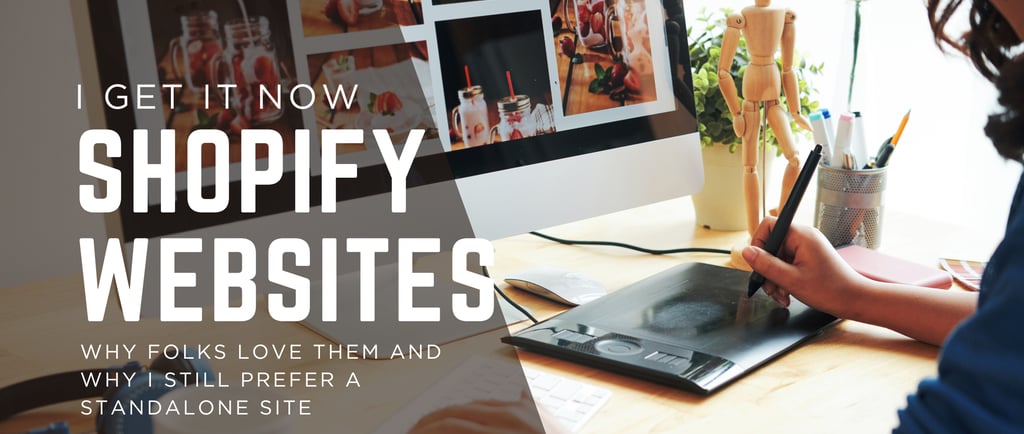I Get it Now - Why Folks Choose Shopify Stores
While there are some great parts to a Shopify store, I still don't think I could choose it as the platform for my website.... here's why.
E. O'Hara
6/5/20252 min read


Disclaimer: I may earn money if you purchase anything through the links in this post.
Why Shopify Won Me Over (At Least a Little)
For the past few months, I’ve been building a Shopify store for a client—one that funnels from their Hostinger site to Shopify for checkout. And after this deep dive, I finally get some of the hype.
Here’s what I love:
Trust & Conversions: Customers recognize Shopify, which lowers barriers for new brands. If they’ve shopped there before and saved their info? Checkout is stupid easy.
Sleek Templates: They’re professional and launch-ready—but they’re not as customizable as Hostinger or WordPress (which I always host on Hostinger—[support me here] if you’re curious!).
My love list is short because…
The Dark Side of Shopify: Spam & Sticker Shock
First, the spam. Oh, the spam. If you run a Shopify store, you’ve seen these:
“Hello, am I speaking to the store owner?” (Translation: “Let me pitch you something.”)
“What shipping method do you use?” (Followed by a link to their store.)
“Critical errors in your code!” (Predatory and infuriating—I didn’t even touch the code!)
Sure, I could filter these, but I’m worried about missing real customer emails. Shopify can’t control this, but man, it’s exhausting.
Then there’s the cost. For the privilege of using Shopify’s 3rd party shipping integrations, we were staring down the business end of $125/month—before actual shipping fees or paying the 3rd party shipper for their work and storing the product. And that’s just one tool.
The Subscription Trap: A Startup Killer
As a startup specialist, I see clients drowning in SaaS fees. Canva Pro at $20/month? Worth it. But when you stack:
Email marketing ($100+)
Multi-channel integrations ($100+)
Deep-linking tools ($100+)
…you’re suddenly needing to sell 25+ units/month just to break even (assuming $20 profit per item). Many founders haven’t even calculated this—which is how they price themselves into oblivion. That's also one of the reasons why I help my clients understand their profitability early on in our work together.
The hard truth? Not every tool is worth it for bootstrapped businesses. Especially for solo-preneurs, paying for software and not being able to get everything out of it every month makes no sense! You may end up paying $100+ per month on having a login and not using it (been there my friend).
It may make more sense to outsource some of your businesses needs. But even that can be challenging for small business owners. Working with Upwork and Fiver can be time consuming - even if the folks on there are affordable. Time is money, so knowing what you have the capacity for is critical. And being honest with your assessment of your bandwidth is even more important. That's why working with a business strategist can be helpful. Having an impartial 3rd party to take a look at things with you can help you be ruthless with cutting costs and making sure you are eliminating waste that you might not even realize is occuring.
To my Shopify warriors: Stay strong against the spam, and please run the math on your tools. Your profit margins will thank you.


